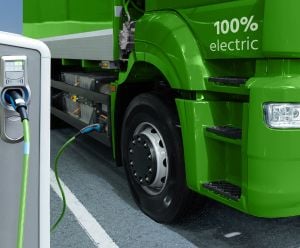
Eco-friendly logistics: How control towers help to grow greener networks

At the recently concluded United Nations Climate Change Conference held in Dubai, global leaders made key pledges to reduce emissions, including weaning the world off fossil fuels. As the world grapples with rising temperatures and more frequent and severe extreme weather events, the heat is on to step up efforts toward net-zero emissions.
With sustainability becoming a top priority for companies, businesses are looking at key areas of their operations. To this end, supply chains are key to fighting climate change. An Accenture report showed that supply chains account for 60 percent of global greenhouse gas emissions.
As the demand for eco-friendly practices increases, greater transparency is needed across supply chains, to determine improvement areas and opportunities to implement sustainable practices. Hence, logistics control towers are emerging as key players in promoting sustainability within the supply chain.
A data-powered view from the top
A logistics control tower is a centralized hub that oversees the entire supply chain process from end to end.
Powered by real-time data analytics, these control towers give a bird’s-eye view over the entire supply chain process from procurement to final delivery. This helps businesses develop full supply chain visibility, which is crucial in assisting businesses to optimize routes, forecast demand, and enhance customer experience.
Real-time data collection via GPS, monitoring traffic conditions, and even weather forecasts can help companies plan more efficient routes, promoting fuel efficiency across the entire journey.
With the rise of Artificial Intelligence (AI) and Internet of Things (IoT), logistics control towers are becoming an even more vital tool for supply chain monitoring.
AI algorithms analyze vast amounts of data to identify optimization opportunities and drive innovation efforts for AI applications. IoT devices such as radio-frequency identification (RFID) tags and GPS sensors also add value to businesses by providing real-time updates on a product’s status, enabling firms to make more informed decisions that will minimize waste and drive more sustainable practices in the supply chain.
Many companies have begun developing AI tool kits — modular software components that can be integrated into Enterprise Resource Planning (ERP) and Customer Relationship Management (CRM) systems.
For instance, Pepsi has developed Pepviz, a tool that uses predictive analytics to help the brand track consumer trends to forecast future demands. This enables Pepsi to moderate its supply chain production process, minimizing wastage, thus making its operations more sustainable.
Track, trace, and control
One challenge that companies face in greening operations is the lack of data. Scope 3 emissions, for instance, are notoriously difficult to track, as they are the result of third-party entities not controlled by the business. Companies cannot cut emissions if they don’t know where the cuts need to be made.
This is where control towers come in. Sustainability metrics can be integrated into the control tower dashboards, which display carbon emissions per unit of freight, energy consumption, and fuel efficiency. Control towers can, thus, monitor and report on carbon emissions data. Doing so allows businesses to track their emissions output, enabling them to make adjustments to hit their emissions reduction targets.
Consumer goods giant Unilever has incorporated control towers to monitor its global shipping emissions. The organization aims to reduce shipping emissions by 40 percent by 2029 against a 2020 baseline and looks to reach net-zero emissions by 2039.
Growing a green network
If there is one key lesson on climate change, it is that winning the fight requires a combined effort.
Beyond greening its internal operations, companies must also consider the operations of their business partners to truly enable an effective reduction in carbon emissions. This includes different phases of their product supply chain, from parts manufacturing to the logistics journey. Through control towers, businesses can assess and score suppliers based on their sustainability practices.
This helps to boost communication and facilitate coordination between manufacturers, suppliers, and distributors to create a greener and more interconnected network of partners.
For instance, DHL offers eco-friendly shipping options across all modes of transport, from railway to air. The firm also provides a control tower solution that includes carbon reporting and analysis for customers that are looking to reduce their carbon footprint.
Action is required today to decisively move towards a net-zero world. But it will require knowledge, data, and visibility on what needs to be done.
ALSO WORTH READING














 English
English